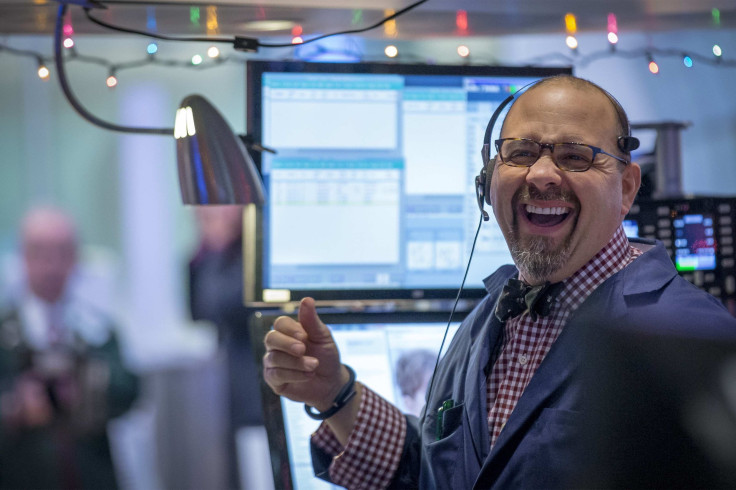Dow Jones Industrial Average Soars More Than 200 Points Despite Russia’s Escalating Currency Crisis

U.S. stocks rebounded Tuesday, despite Russia's mounting currency crisis and surprise interest rate hike, as the Dow Jones Industrial Average bounced back after wavering in early trading. Gains from Boeing Co., which jumped over 2 percent to $125.43, led the Dow higher after the company raised its quarterly dividend 25 percent, hiking its share repurchase plan to $12 billion.
In midday trading, the Dow Jones Industrial Average soared 211.19 points, or 1.23 percent, at 17,392.03; the S&P 500 Index gained 22.49 points, or 1.13 percent, at 2,012.12. The Nasdaq Composite added 29.99 points, or 0.65 percent, to 4,635.18.
Weighing on the markets earlier was the Russian central bank's announcement that it raised its key interest rate to 17 percent from 10.5 percent, effective immediately. The move sent the ruble plummeting as much as 19 percent to a record low of 80.10 per dollar. The interest rate hike was the largest single increase since 1998, which led to the government defaulting on its debt.
“We're in a vicious cycle here for Russia with a situation that could get much worse next year. We’re expecting extraction of about 3.5 percent, but that could be worse if things continue to deteriorate and the Russian central bank maintains higher interest rates,” Gregory Daco, lead U.S. economist at Oxford Economics, said.
Data Tuesday showed the U.S. manufacturing sector continuing to expand in December; however, the rate of growth hit an 11-year low. The Markit preliminary “flash” Purchasing Managers Index fell to 53.7 in December, down from 54.8 in November. “Softer output and employment numbers merely represent a cooling in the pace of expansion from unusually strong rates earlier in the year, but also send a warning light to policymakers that the fourth quarter is likely to see a weakening in the pace of economic growth, which is starting to hit hiring,” Chris Williamson, chief economist at Markit, said in the report.
The disappointing data Tuesday comes the same day that China reported weaker-than-anticipated manufacturing growth for the first time in seven months, signaling the economic outlook for the world’s second-largest economy could be worse than previously forecast. China’s HSBC and Markit “flash” Manufacturing Purchasing Managers Index (PMI) dropped to 49.5 from a final reading of 50 in November, contracting for the first time in seven months. A reading below the 50-point level indicates contraction in the manufacturing sector.
“Today’s flash manufacturing PMIs suggest that the pace of global growth has cooled a little further in recent weeks. Nonetheless, the slowdown since the summer has been milder than the tone of media reports would suggest and is certainly not sharp enough to explain the slump in oil prices,” London-based research consultancy firm Capital Economics said in a research note Tuesday.
Separate data Tuesday showed new home construction in the U.S. topped a million on an annualized rate in November, while housing starts fell 1.6 percent and building permits declined 5.2 percent last month. Groundbreaking on new homes in the U.S. fell 1.6 percent to a seasonally adjusted annual 1.028 million-unit pace in November, the Commerce Department said in its New Residential Construction Report Tuesday. November's housing starts, which are considered to be a critical indicator of U.S. economic strength, were revised up to a 1.045 million-unit rate. Meanwhile, housing permits fell 5.2 percent last month to a 1.035 million-unit pace.
© Copyright IBTimes 2024. All rights reserved.












